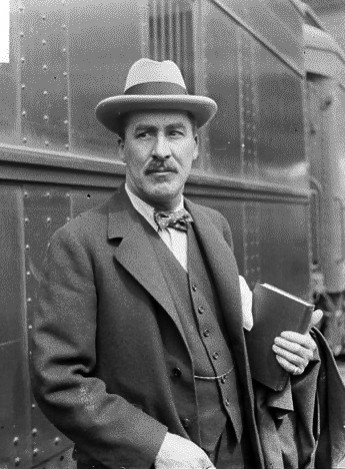Who Is Howard Carter? 5 Things To Know About The Man In The Latest Google Doodle

Featured in the latest Google Doodle is Howard Carter, an English archaeologist and Egyptologist known for having a primary role in the discovery of the tomb of 14th-century B.C. pharaoh Tutankhamun (a.k.a. King Tut)
Carter, who discovered King Tut's tomb on Nov. 4, 1922, is illustrated in the Google Doodle on the 138th anniversary of his birthday.
The doodle depicts Carter embracing the golden artifacts with Google's usual logo shadowed in the background.
According to reports, Carter was long in pursuit of the treasures before he had eventually made the discovery. Carter had worked as an archaeological excavator for 30 years prior to stumbling upon the four-room chamber that contained the King Tut's sarcophagus.
Here are five more things to know about the man depicted in the latest Google Doodle -- Howard Carter.
1. Early Career
In 1891, when he was just 17, the talented young artist was sent out by the Egypt Exploration Fund to assist Percy Newbury in the excavation and recording of Middle Kingdom tombs at Beni Hasan. In 1892 he worked under the tutelage of Flinder Petrie, a famous English Egyptologist.
In 1899, Carter was appointed the first chief inspector of the Egyptian Antiquities Service. He supervised a number of excavations at Thebes (now known as Luxor) before he was transferred in 1904 to the Inspectorate of Lower Egypt.
1. Lord Carnarvon Employment
After three hard years, Carter was employed by Lord Carnarvon to supervise his explorations. Gaston introduced the two in order to ensure that Carter imposed modern archaeological methods and systems of recording.
After several years of fruitless searching, Carnarvon became dissatisfied with the lack of results and, in 1922, he gave Carter one more season of funding to find the tomb of King Tut.
3. The Steps To Discovery
On Nov. 4, 1922, Carter's excavation group found the steps leading to Tutankhamun's tomb. Along with Carnarvon, Carnarvon's daughter, and others, Carter made the tiny breach in the top left hand corner of the doorway and saw gold and ebony treasures. When Carnarvon asked can you see anything?, Carter replied with the famous words: Yes, wonderful things.
4. Tutankhamun's Tomb
On 16 February 1923, Carter opened the sealed doorway, and found that it did indeed lead to a burial chamber. It was then that he got his first glimpse of the sarcophagus of Tutankhamun. The discovery was eagerly covered by the world's press. Reports indicates that Carter, Lord Carnarvon and Lady Evelyn Herbert entered the burial chamber shortly after the tomb's discovery and before the official opening.
5. Later Work and Death
The documentation and clearance of King Tut's tomb with its thousands of objects continued until 1932. Following the discovery, Howard Carter retired from archaeology and became a part-time agent for collectors and museums.
He died of lymphoma, a type of cancer, in Kensington, London, on 2 March 1939 at the age of 64. Carters death post tomb discover, despite being the leader of the expedition, is the piece of evidence most commonly put forward by sceptics to refute the idea of a Curse of the Pharaohs plaguing the party that violated Tutankhamun's tomb.
© Copyright IBTimes 2024. All rights reserved.






















